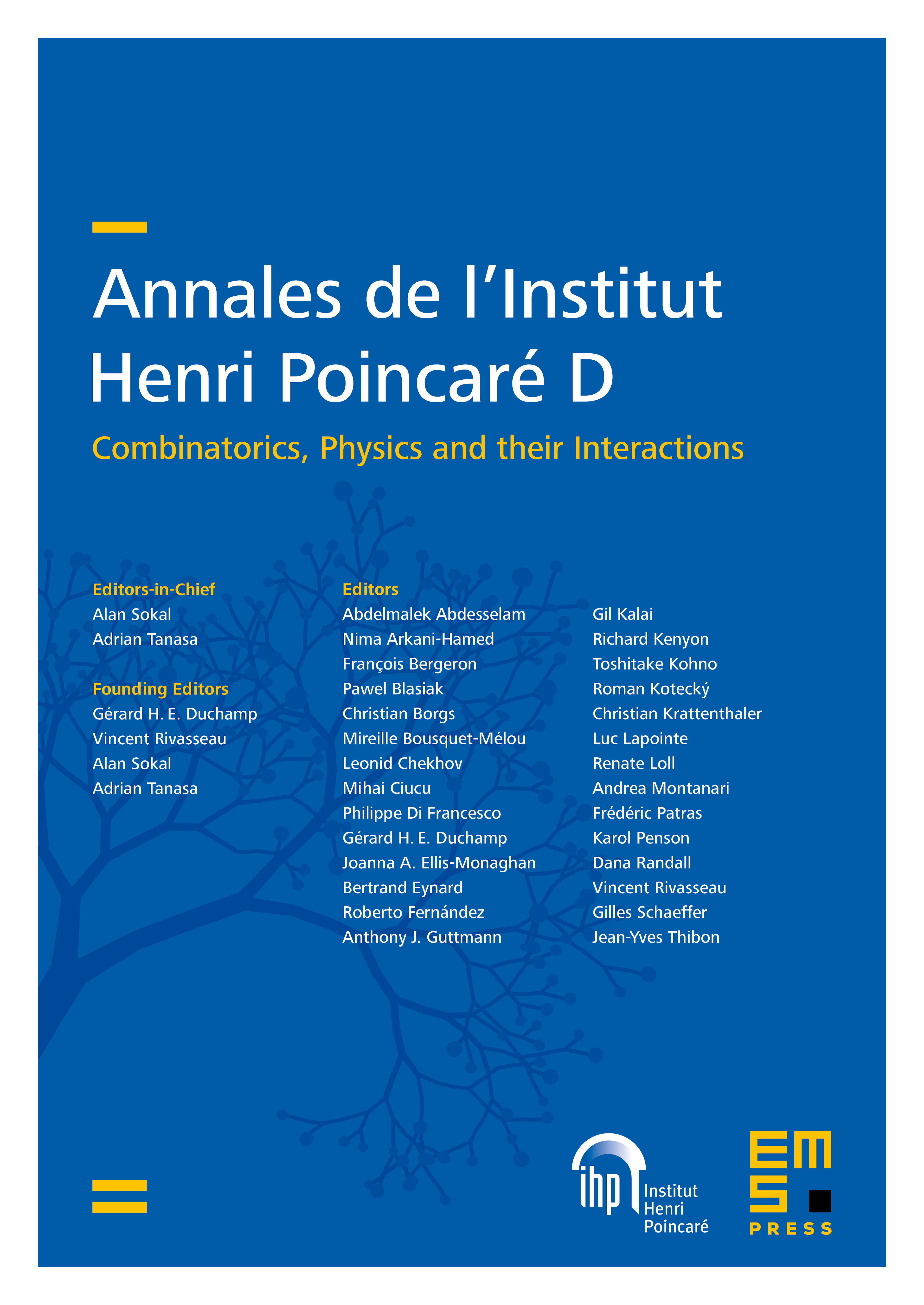Collapse transition of the interacting prudent walk
Nicolas Pétrélis
Université de Nantes, FranceNiccolò Torri
Université de Nantes, France

Abstract
This article is dedicated to the study of the 2-dimensional interacting prudent self-avoiding walk (referred to by the acronym IPSAW) and in particular to its collapse transition. The interaction intensity is denoted by and the set of trajectories consists of those self-avoiding paths respecting the prudent condition, which means that they do not take a step towards a previously visited lattice site. The IPSAW interpolates between the interacting partially directed self-avoiding walk (IPDSAW) that was analyzed in details in, e.g., [16], [4], [5] and [10], and the interacting self-avoiding walk (ISAW) for which the collapse transition was conjectured in [11].
Three main theorems are proven. We show first that IPSAW undergoes a collapse transition at finite temperature and, up to our knowledge, there was so far no proof in the literature of the existence of a collapse transition for a non-directed model built with self-avoiding path. We also prove that the free energy of IPSAW is equal to that of a restricted version of IPSAW, i.e., the interacting two-sided prudent walk. Such free energy is computed by considering only those prudent path with a general north-east orientation. As a by-product of this result we obtain that the exponential growth rate of generic prudent paths equals that of two-sided prudent paths and this answers an open problem raised in e.g., [3] or [8]. Finally we show that, for every , the free energy of ISAW itself is always larger than and this rules out a possible self-touching saturation of ISAW in its conjectured collapsed phase.
Cite this article
Nicolas Pétrélis, Niccolò Torri, Collapse transition of the interacting prudent walk. Ann. Inst. Henri Poincaré Comb. Phys. Interact. 5 (2018), no. 3, pp. 387–435
DOI 10.4171/AIHPD/58